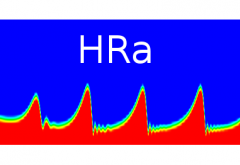Claim:
Within each of these three groups the chords are interchangeable:
Group 1: C7b9, Eb7b9, F#7b9, A7b9, Edim, Gdim, Bbdim, C#dim
Group 2: Db7b9, E7b9, G7b9, Bb7b9, Fdim, G#dim, Bdim, Ddim
Group 3: D7b9, F7b9, Ab7b9, B7b9, F#dim, Adim, Cdim, Ebdim
Proof:
(Without restrictions only for group 1)
C7b9: C E G Bb Db
Eb7b9: Eb G Bb Db E
F#7b9: F# A# C# E G
A7b9: A C# E G A#
Edim: E G Bb Db
Gdim: G Bb Db E
Bbdim: Bb Db E G
C#dim: C# E G A#
The diminished chords are all made up of the same notes. The dominant seventh chords with the flat nine have common tones with the diminished chords, only the root differs. When replaced, the different root can be viewed as an altered tone that increases tension. With a dominant seventh chord, this tension is desired and is usually subsequently resolved by a major or minor chord.
Remarks:
The idea for this comes from the course “Jazz Theory Unlocked” on jazzadvice(dot)com. I think the knowledge is older. I have formulated them in detail here in mathematical style.
All chords above can be used as dominant chords. You can leave out the b9. C7, Eb7, Gb7 and A7 are also interchangeable.
If you have a dominant, such as G7, you only need to go one semitone step higher for G#dim.
The interchangeable chords can be found by working in minor thirds (3 semitone steps).
These substitutions can be made in the major-ii-V-I progression.
In the minor ii-V-i progression, the V is often altered and b9 is an alteration. So this tip is good for that too.
I think this insight is useful when comping, composing and soloing.
